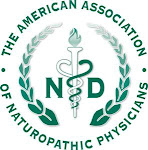
Photo by controltheweb via Flickr, under the Creative Commons License.
I have a bumper sticker on my car that says, “What are you grateful for?”
It is one of my favorite questions…. to others as well as myself. I use it often if I can’t sleep at night. It serves to put me in a positive state of mind, reminding me of all of the many blessings and abundance in my life.
Being a naturopathic doctor gives me more to be grateful for each day.
I get to practice cutting edge medicine in a calm and comforting environment. I have the training to diagnose and treat disease, working to uncover root causes of many illnesses like few other practitioners have the opportunity to do. I get to utilize safe and effective medicines, including herbs, nutrients and homeopathy, helping to find the perfect right thing for my patients that will not interfere with other medicines or cause unwanted side effects.
My colleagues are smart, kind and good-humored. Many of them I count among my best friends. I can always rely on them for an insightful opinion and words of wisdom. The years that I volunteered as president of the New Hampshire state association, and more recently on the board of directors of the AANP, have led me to be a part of a greater good. This has also afforded me the opportunity to interact with truly amazing, gifted people. I feel so lucky to be associated with this profession.
I am grateful that naturopathic medicine makes so much sense. That is what struck me when I first learned of it. Treat the whole person, remove obstacles to cure and find and treat the cause of disease…why don’t we do that in our lives more often.
Naturopathic medicine makes me more connected to nature. It brings my attention to making our planet a better and safer place. It creates awareness in me and then those I work with to avoid toxic chemicals in skin care products, cleaning products and in the food we put in our bodies. I am more grateful for pure water and organic food because of my acute awareness that everything we put in our bodies matters.
I am most grateful that my patients get better. That I can give them the tools to improve their health in a dramatic way, when no one else has been able to get to the bottom of their illness. One woman doesn’t need to get a hysterectomy; a young woman has a baby where she’d not been able to have one; another has resolution to very painful digestive problems; a man who came to me can breath without allergy medications, and another is able to wean off his asthma medications as his symptoms have resolved. There are many more stories just like these. It is rewarding to see that they are so happy, healthy, and yes, grateful.
One of my favorite things to do is to speak to prospective students of naturopathic medicine. I can’t imagine a more rewarding profession.
"Gratitude unlocks the fullness of life. It turns what we have into enough, and more. It turns denial into acceptance, chaos into order, confusion into clarity.... It turns problems into gifts, failures into success, the unexpected into perfect timing, and mistakes into important events.
Gratitude makes sense of our past, brings peace for today and creates a vision for tomorrow. "
-Melodie Beattie








